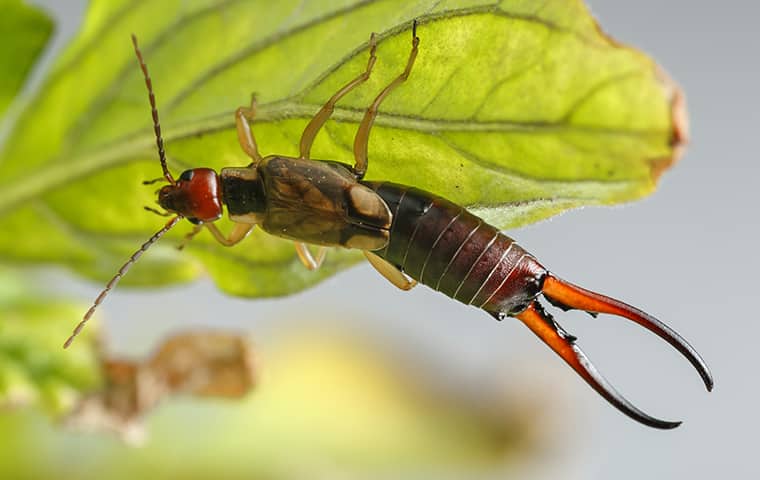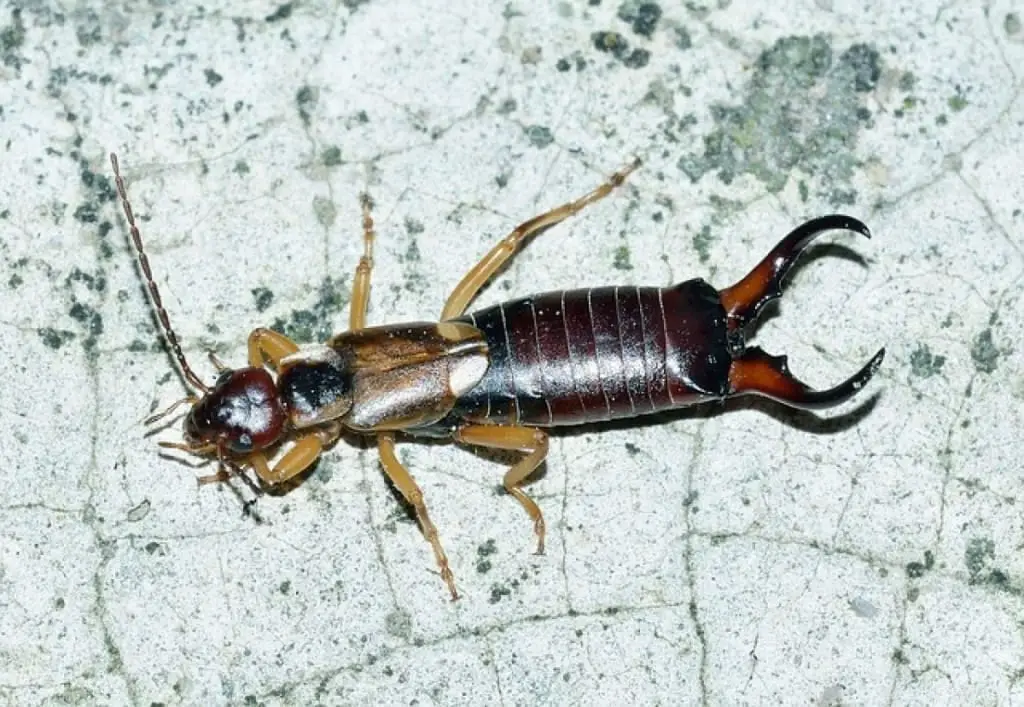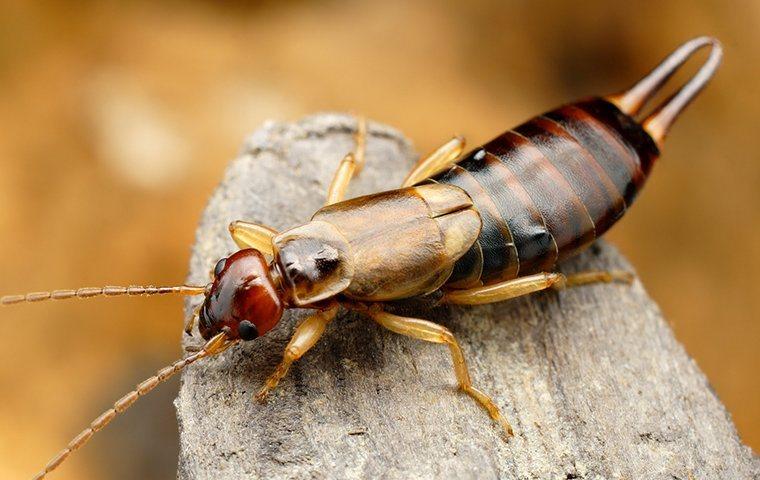Table Of Content

First, look for tiny gaps and cracks where earwigs could gain entry. Remember that earwigs are about 0.5” (13 mm) long and have a flattened body — ideal for squeezing through the tiniest of gaps. You’ll need a small container with a lid to make an earwig trap with soy sauce and oil. Mix equal parts of vegetable oil and soy sauce and pour into the container.
Sign up to the Homes & Gardens newsletter

Outdoors, your yard may provide a substantial food source for these insects, and in large numbers they can be destructive garden pests. Earwigs are active at night, so they typically spend the daylight hours in hiding places like wood piles, mulch, and crevices in rocks. If your lawn has a lot of these features, plus plenty of plant debris and small insects to snack on, it’s ideal for an earwig infestation. Earwigs usually spend their days hiding while feeding on leaves, flowers, fruits, mold and insects at night.
Earwig invasion: Pincer bugs wriggle into S.F. homes - Argus Leader
Earwig invasion: Pincer bugs wriggle into S.F. homes.
Posted: Fri, 01 Jul 2016 07:00:00 GMT [source]
Earwig infestations
This might also be a good opportunity to clean your gutters, and make sure no leaves are clogging it up to create damp/wet areas. Earwigs usually make their way into homes through cracks or crevices, where they tend to hide in high levels of moisture. Typically, these are areas in the bathroom, kitchen, windowsills or in gaps at the baseboards.
How to get rid of earwigs: 8 ways to protect your backyard and home from pincher bugs
John Melchior from Kapture Pest Control urges you to pause and decide whether you want to get rid of earwigs from your home. While this may seem like an easy answer, he explains that the creature does come with its benefits, especially if you're looking to preserve your best indoor plants. If you do have a humidity problem in the home however, you could invest in one of the best dehumidifiers to dry up some moisture. While this may not get rid of earwigs completely, this will do a good job of improving the conditions, and keep them at bay. Ensure you fix any drips or leaky faucets, and also look out for any warping or bulging siding, as this indicates possible water damage within that wall. If you come across this, you’ll need to remove the source of the problem.
PEST LIBRARY
Their diet consists mostly of both live and dead insects as well as decomposing plant materials. Occasionally, they will chew on plants in your landscape or vegetable garden. While their pincers are used primarily to aid in reproduction, hunt prey and for defense, earwigs will pinch humans if they are picked up and agitated. While the pinch can sometimes be painful, no venom is transferred, and the pinch rarely breaks the skin. Once hatched, the mother will continue to provide food to her young until they are ready to fend for their themselves.
How to Kill, Control & Prevent Earwigs
Longmont Wild: Is that an earwig in my ear? - The Longmont Leader
Longmont Wild: Is that an earwig in my ear?.
Posted: Sat, 25 Jul 2020 07:00:00 GMT [source]
Since light attracts earwigs at night, consider using it as an attractant when you set traps. Since they love to munch on vegetation, you can spray the leaves of your plants or bushes. In fact, you could use this homemade bug spray around the home to deter most common pests.
If the crevices around your doorways and windows need help with moisture control, sprinkle food-grade diatomaceous earth around the cracks. This natural desiccant will dehydrate the insects as they walk through the powdery substance. If leaves have blown into an unfinished or even dirt floor basement, the conditions are perfect for earwig populations. However, the bugs enter homes when the weather is too hot or cold. And if the summer is particularly dry, an earwig invasion could happen when they’re searching for sources of moisture.

Learn more about earwig eggs and what you can do if you find them. This substance is good for any awkward areas like baseboards and any closed-off or hard-to-monitor areas like under the fridge / sofa or the top of kitchen cupboards. You can use your handheld vacuum for a hands-free way to retrieve any dead bodies. To share feedback or ask a question about this article, send a note to our Reviews Team at
They do have a particular fondness for Dahlias, chrysanthemums and clemantis, so it's common to see chomped petals, frayed foliage and other signs of foul play. Earwigs have elongated, flattened bodies that range in size from ¼- to 1-inch long. Their most notable characteristic is the pincers on the back of their abdomen which makes them look very intimidating. Earwigs don't bite in the traditional sense, and they don't have any venom. But if you do try to pick up an earwig, it could pinch you with those pincers on its tail. Earwig infestations are quite rare to come across, as they are considered a more individual insect, not belonging to a queen or colony.
You will find them hiding in cool, damp places in your yard like under rocks, mulch, leaf litter, wood piles, or other vegetation. You may also see them around your home's foundation, outdoor faucets, and air-conditioning units. Once you’ve earwig-proofed the area as much as possible, you can use common household materials to make your plants less appetizing. Mix a solution of water and a few drops of gentle dish soap, put it in a spray bottle, and spray the leaves of your plants. You can also wipe down leaves with this soapy water, making them taste unpleasant to the earwigs.
Here, pest experts advise how to get rid of earwigs, indoors and out. The idea is that these pests will be attracted to the smell of the salty condiment and crawl into the container. Once they go in to sample the recipe, they’ll end up being trapped in the oil and instantly drown.

No comments:
Post a Comment